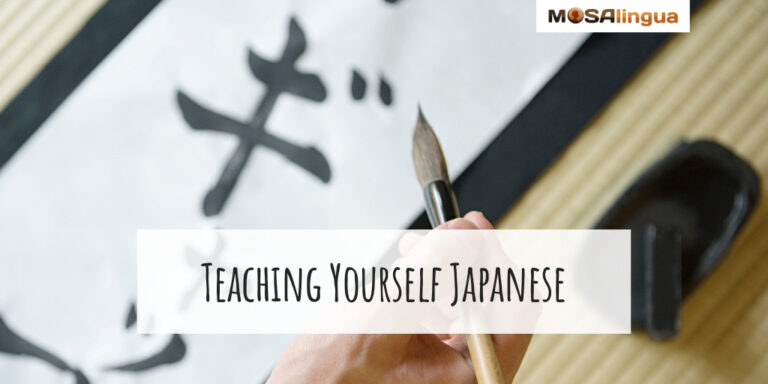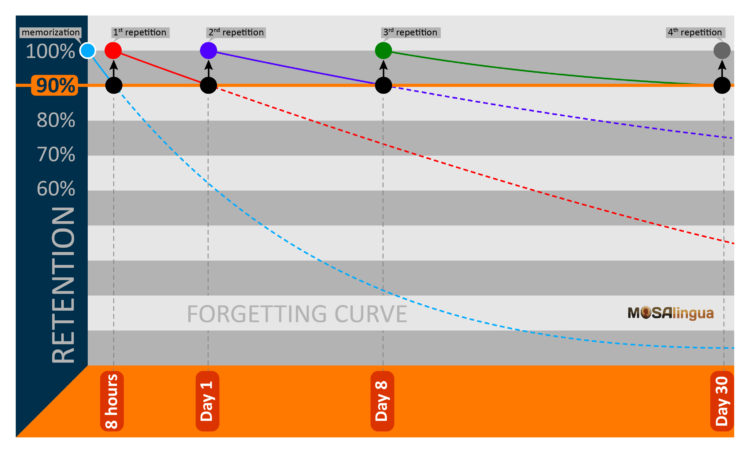
What’s inside…
How to Learn Japanese – You’re About to Embark on a Great Adventure!
Why learn Japanese?
Why should you learn Japanese? Only you can answer that question. And actually, it’s crucial that you ask yourself this question early on to establish your core motivation and set effective goals.
Do you want to learn Japanese… out of curiosity? for love? for professional reasons? to understand the culture better? No matter the reason, take note of it (literally – write it down!) and base your goals on it.
“I want to speak Japanese to communicate with my in-laws.”
“I want to learn Japanese to read manga in the language in which they were written.”
“I want to learn Japanese so that I can understand and speak when I take culinary classes in Japan next year.”
“I want to pass the JLPT in three years.”
The more clear and specific your goals are, the easier it will be to measure your progress and keep your motivation strong. And that is often the biggest challenge of all! There’s nothing keeping you from breaking your goals up into smaller short-term objectives like:
- learning to write the syllabaries,
- learning culinary vocabulary words and their pronunciation,
- or improving and mastering pronunciation.
If you’re going to Japan on vacation, or for study or business, we strongly encourage you to learn as much of the language as is reasonable.
You can often communicate in English in Japan, so there probably won’t be a complete language barrier between you and the locals. But learning the native language of any country where you’re spending time will expose you to a whole other side of the country. The people, places, and experiences you’ll find will almost certainly be different if you have a working knowledge of the language.
Why teach yourself?
There are all kinds of methods out there to help people learn languages: private lessons, group courses at a school or through a cultural organization, online courses, or self-directed learning.
We’ll be honest, this last one is the hardest… but it’s also going to give you the most flexibility and freedom. You’ll learn what you want to, at your own pace, and you’ll only have to work toward your own goals. These days, the internet gives learners access to all the necessary resources. So yes – it is possible. But again, you’ll need to rely on your own motivation to get you to your goal.
How long does it take to learn Japanese?
The road to learning Japanese is long – especially if you’re making the journey on your own. It’s very different from English, so you’ll have to be patient with yourself as you work to understand the language and how it functions.
But again, the answer to this question depends upon your goals. If you’re trying to learn to speak Japanese to accept a job in Japan, the process will be much longer than if you’re planning to learn the basics to greet your in-laws in their native language, for example.
Another important element to consider when answering this question is: how much time are you able to dedicate to your learning?
It’s very important to have some contact with the language every single day. Learn in stages, and commit to a reasonable and sustainable amount of daily study time.
If you try to learn Japanese by studying for 3 hours every day for one week, let’s be honest – it won’t happen. You’ll almost certainly end up burning out.
Instead, if you commit to studying Japanese for 20-30 minutes every day for a year, we guarantee you’ll make progress.
Next, it’s important to realize that the basics aren’t the hard part.
You’ll be able to find all kinds of methods, books, YouTube channels, and other Japanese resources that can help. Learning vocabulary, syllabaries, etc. takes time, but it’s not impossible. It’s simply memorization.
The bigger challenge is to progress beyond this point: to continue moving forward on your own, and to find the motivation to keep pushing yourself.
Where should I start?
If you’re wondering how to learn Japanese, this is a big question. As we mentioned, there are many methods, resources, and tips for solo learners.
But often, the main piece that’s missing from the list is an overall structure. Organization and structure are critical parts of language learning, especially if you’re working on a language that’s very different from your native tongue.
So, we’ve assembled several tools and sketched out a structure that you can use. We’ll also explain how you can develop your skills in an order that makes sense for you.
Step 1: Find a Method For Learning Vocabulary
Above all, learning a language is about learning the words and expressions that will allow you to communicate. Of course, when we talk about learning vocabulary, that also includes pronunciation and spelling.
The first step in your language learning journey should be to gather helpful tools for working on all aspects of your target language, starting with vocabulary.
Here at MosaLingua, we strongly believe that you should use an app for vocabulary regularly. This is your “home base,” which you will come back to consistently throughout the learning process.
Once you have a vocab app that you love, find additional tools that will help you improve other aspects of the language, like speaking, listening, reading, and writing.
Vocabulary
MosaLingua offers a powerful web- and mobile-based app to help you learn and study Japanese vocabulary.
It uses the Spaced Repetition System, which times review sessions specifically to target durable long-term memorization. This is one of the most effective memorization techniques out there. We try to provide as much context as we think is necessary on each flashcard, but you might find it useful to consult other resources as well.
Another great feature of the MosaLingua Japanese app? You can add and customize your own flashcards!
This graphic of the “forgetting curve” illustrates the Spaces Repetition System we use
for our vocabulary apps.
Don’t be afraid to diversify your learning tools and resources. As with anything, it’s a good idea to explore a few different ones to find out what works best for you. With Japanese, if you learn using multiple platforms you’ll be able to reinforce what you’re learning and avoid developing deficits in any single area.
To this end, feel free to explore some other apps and methods: Kanji Study, Obenkyo, and JA Sensei are all popular tools that we cover in more depth below.
Another method that’s very widely used is Minna no Nihongo. It uses literature to introduce the language and its vocabulary. You can visit the website Minna no Nihongo to learn more. (Note: this tool is a bit more complex than language learning apps. The website can be a little tricky to navigate.)
Other tools
As we said, once you’ve found a tool for learning new vocabulary words, we suggest that you find others to help you work on your reading, writing, listening, and of course, speaking.
It might not take you very long to observe the limitations of a simple vocabulary app. Yes, words are a huge part of any language… but they’re not the ONLY part! There are also sounds to listen for, and sentences to build. Vocabulary-learning apps are great, but they won’t provide you with an all-around view of the language. This is a big part of why we encourage you to use as many different tools and platforms as possible. You’ll find a list of many of our favorites below.
Step 2: Gather Resources to Complement Your Language Study
If you want to learn Japanese online, there are more great tools, resources, and references available now than ever! You can find a longer list on our Best Resources for Learning Japanese page.
It’s also divided out by skills, so you can find resources to target vocabulary, listening, speaking, reading, writing, etc. We update it often, so be sure to bookmark it and check back every once in a while to make sure you’re using the best and most up-to-date free resources.
We’ve also provided a short list of a variety of tools and methods below.
When you’re learning vocabulary, pay attention to both the written form and the pronunciation. If your goal is to communicate, listening to audio pronunciation is essential. Thankfully, you can learn Japanese words and sentences without having to bury your nose in books.
Here’s some more good news: Japanese pronunciation isn’t too far from English pronunciation! Actually, about 85% of Japanese sounds exist in English.* (It’s harder if you’re a Japanese person trying to pick up English – there are about 25 new sounds you’ll need to learn!)
There are many different solutions available for working on your Japanese listening skills:
YouTube channels
Many different YouTube channels offer a variety of accessible Japanese content for free:
- We recommend the channel Miku Real Japanese for getting straight to common, native-sounding expressions and pronunciations.
- The channel NihonGoal is based on the Minna no Nihongo method mentioned above.
- TalkInJapan has a lot of varied content and videos for learning Japanese.
You can also find lots of channels focused on Japanese culture. They don’t (necessarily) talk about learning the language, but rather about the Japanese lifestyle, music, society, and the differences between American/British and Japanese culture.
For example, we like:
Watch and listen to them to get more familiar with the Japanese lifestyle and culture (and to hear pronunciation).
Movies, series, anime, and Japanese TV channels
Another efficient way to learn both spoken Japanese and to dive into Japanese culture is to watch movies, series, anime, or TV channels in Japanese. The internet gives you easy access to all this, and it is usually free.
- The site NHK (mentioned again below for writing) lets you watch live Japanese TV, with optional subtitles. You can also watch recorded programs.
- Ring, Godzilla, 7 Samurai… Japanese cinema has many cult movies. You can watch them on platforms like Netflix or other video-on-demand services. These platforms also provide subtitles, which can be a good tool for beginners.
- We also recommend anime, like Princess Mononoke and other works by Hayao Miyazaki. These are also available on most major video-on-demand services.
Finally, podcasts and music are another great outlet. They can also help you to familiarize your ear and understand better, while also being entertaining.
*Kavanagh, Barry. The phonemes of Japanese and English: A contrastive analysis study. Aomori University of Health and Welfare 8 (2), 283-292.
Learning the Japanese scripts and alphabet is essential for both writing and reading, and, essentially understanding.
However, you should know right off the bat that searching for the resemblance between the Latin and Japanese alphabets won’t help you. The Japanese alphabet and writing must be learned from the beginning, from scratch, just like when you learned the English alphabet as a child.
We recommend that you learn vocabulary (and pronunciation) while working on writing and the alphabet at the same time.
The Japanese writing system is one of the most complex elements of the language… Because there are actually 3 types of characters: hiragana, katakana, and kanji.
Kanji represent ideas. There are about 50,000 of them, and all of them can be read in different ways depending on their function or position. Learning Japanese writing is equivalent to learning these forms. Start with these, as they are what will allow you to read in Japanese (whether the menu in a restaurant, a manga, or newspaper articles).
Apps
Just like there are many apps for learning Japanese vocabulary, there are others for learning kanji, hiragana, and katakana:
- Kanji Study is a kind of kanji dictionary that will help you learn their meanings.
- Obenkyo is an app for beginners, meant to help teach different kanji by level. They also cover hiragana, katakana, and other elements of vocabulary.
- JA Sensei provides practice with kanji, hiragana, katakana, and more general vocabulary.
Other Japanese websites
There are many other interesting websites that can be used to learn vocabulary and writing:
- Kanji Link teaches the rules behind the formation of kanji, as well as grammar and vocabulary courses.
- Kanji Koohii is listed on many of our resource pages and is another great tool for learning kanji.
- Jisho is an English-Japanese dictionary. You can write a word in English, draw the kanji, and even hear the pronunciation. You can see the word in Japanese, its kanji, and an explanation of how to draw it. There are also example sentences to help you learn it in context.
- NHK provides a variety of lessons and dialogues. There are also a handful of accessible and well-designed lessons on Japanese writing.
There’s no real secret to learning kanji, hiragana, and katakana – you just need to study them and learn them by heart.
Like any other language, you can start simply by talking to yourself! When you’re first starting out, this will help you become more confident and to work at your own pace without pressure.
However, if you want to make quick progress, then find pen pals or conversation partners with whom you can chat online.
At MosaLingua, we like the concept of language exchanges: find someone native in the language you wish to learn, who in turn wishes to learn English. You can talk a little in English, a little in Japanese, and make progress together.
Be careful though – it’s important to find a pen pal who has the same level as you (them in English, you in Japanese). This is the reason why this step comes last – because you won’t quite be able to start from the beginning. You’ll need a minimum amount of vocabulary, listening skills, and knowledge of the language to communicate.
Alternatively, you can look for a Japanese pen pal who speaks a common second language. This “neutral” language will allow you to navigate or guide the conversations.
Our Advice: How to Learn Japanese By Yourself
Now that we’ve given you a few different tools and first steps, we’d also like to share some of the tips we’ve picked up over the years.
One of the hardest things about self-directed learning… is that you’re alone! There’s no one there to correct you and no one to answer your potential questions (except our friend Google). So, if you can, why not start the adventure with a friend? A partner who you can grow and progress with, and who you can lean on sometimes when you need help.
You can also, as we already mentioned, try to find a Japanese partner who speaks another neutral language that you share, who will be able to answer all your questions and point you in the right direction.
There are also learning forums where you can find learners at your level, who share your difficulties and your questions. Visit these sites regularly so you don’t feel too alone in this learning process, and to have your questions answered if necessary.
As in many languages (but unlike English), Japanese has both a neutral/casual form and a “polite” form.
When learning vocabulary, or simply learning to speak Japanese, we recommend learning both forms. This will expand your communication possibilities. Of course, you can communicate with only polite or only neutral/familiar words and phrases, but if you want to adapt to the person you’re speaking to, consider learning different forms.
As we said before, repetition is crucial. Don’t limit yourself to long periods of forced learning, which are only bearable a couple of times per month. We recommend learning a little every day and trying to be as consistent as possible. And if you think that “you don’t have time,” then remember:
- time is only an illusion (time can be found if you really want it!),
- you can take advantage of the downtime throughout your day to learn, like on the bus or in the bathroom, while the pasta is boiling or before bed.
-
Get away from English
This is another essential piece of the puzzle!
You’ll only start to really learn Japanese when you stop translating from English into Japanese, or from Japanese into English.
These two languages are very different: writing, reading, grammar, conjugation… Even politeness, as we said above, is perceived differently. Learning Japanese is learning a language from scratch. So, you’re wondering where to start? Our answer, in the end: “by detaching yourself from English.”
And have a look around our blog and YouTube channel for other language-learning tips that might be useful along your language journey. Happy learning!



Comments